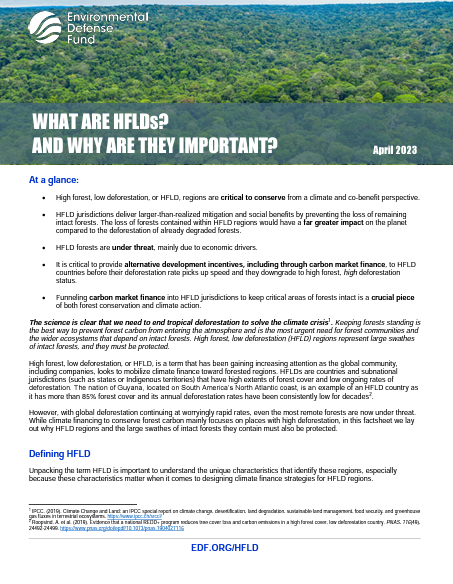What Are HFLDS? And Why Are They Important?
This factsheet defines the concept of high forest, low deforestation (HFLD) regions, explains why they are crucial, the threats they face as well as how to combat these threats through the use of financing. HFLDs are countries and subnational jurisdictions, such as states or indigenous territories, that have high extents of forest cover and low ongoing rates of deforestation. These regions are critical as they can deliver mitigation and social benefits at scale, and the loss of these regions would have a far greater impact on the planet compared to the deforestation of already degraded forests. There are about 30 countries and subnational jurisdictions that can be considered HFLD, all of which are in developing economy countries.
The document describes that there is an urgent need to provide sources of income to HFLD regions, and to place a financial value on their standing forests because of their unique characteristics. It describes that one of the key methods of doing this is through the carbon market, which offers a reward for forest stewardship by putting a price on the carbon-value of standing forests. For example, the Reducing Emissions from Deforestation and forest Degradation (REDD+) framework could help countries, including HFLD countries, transition to an economic development pathway that bypasses severe forest cover loss by incentivizing forest positive practices
